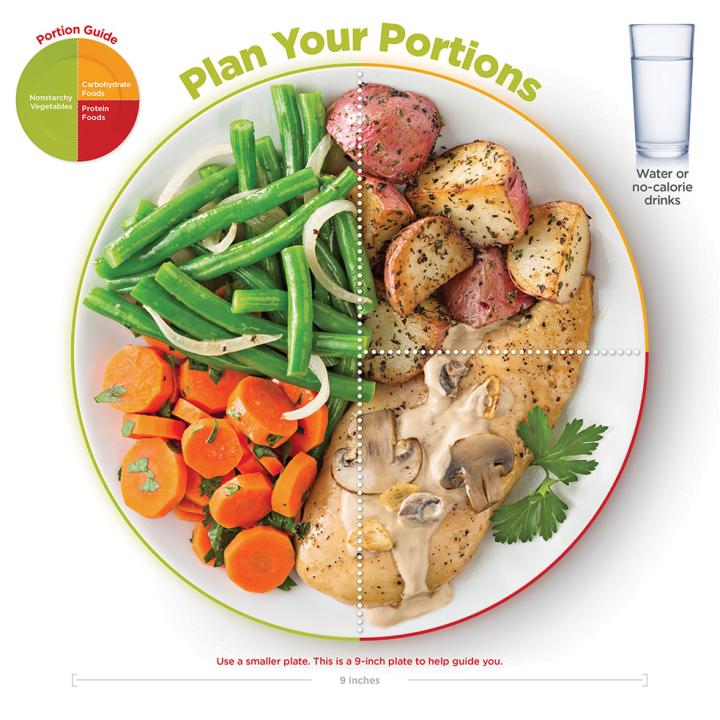Have you heard that knowledge is power? This is true for eating healthy, too. Learning about meal patterns that have been proven to help manage diabetes will improve your wellbeing. Using meal patterns as a guide to create an eating plan is the first step in your diabetes journey.
Science-Based Nutrition Recommendations
Every year, the American Diabetes Association (ADA) publishes our Standards of Care in Diabetes (Standards of Care). The Standards of Care is a set of practice guidelines based on the latest scientific research and clinical trials. These guidelines are used by health care professionals to treat diabetes and its related health conditions.
Every five years, a group of experts come together for an in-depth review of the nutrition guidelines in the Standards of Care. The result of this review is called the Nutrition Consensus Report. This is the foundation for the ADA’s recommendations for nutrition.
The Nutrition Consensus Report identifies nutrition strategies that have been shown to help people reach or stay at their blood glucose (blood sugar) targets, reach weight management goals, and low risk for health conditions related to diabetes. The nutrition recommendations highlight that eating plans should be based on the needs of each person. Your own eating plan will be based on your own needs and preferences.
The current report outlines seven key meal patterns that have been shown to help manage diabetes. Work with your health care team to decide which meal pattern works best for you.
What is the best eating plan for diabetes?
“Diet” is a tricky word that can carry a lot of emotional baggage for some people. This four-letter word can trigger a lot of stressful thoughts and is often thought of as a more of a short-term approach to eating. Instead, health care professionals prefer to use terms like “meal” or “eating plans” and “meal patterns” to talk about when, what, and how much we eat to help offer a more long-term approach that can lead to reaching goals.
The short answer is that there isn’t one eating plan that prevents or manages diabetes that anyone can use. There are millions of people living with diabetes, and when you consider cultural backgrounds, personal preferences, other health conditions they may have, and elements like costs of food, living situations, and access to healthy foods—there are too many factors for a single approach to nutrition that will work for everyone.
The ADA focuses on meal patterns that are scientifically proven to help manage diabetes. These meal patterns are meant to be a way of eating that lasts and works with your needs and preferences. While fad diets may help you to lose weight quickly, it’s more important to focus on food choices you will want to stick with over time and that you can integrate into your lifestyle for long-lasting results.
Meal Patterns for Diabetes Management
A big part of managing diabetes is a healthy lifestyle, including what you eat. When considering what meal plan will work best for you, consider the types of foods you like to eat, the time you have to prepare food, your budget, and your family’s dietary needs. Consult with your health care team about what meal pattern might work well for you based on your particular health needs and goals.








